Academic Art – When Creativity Becomes Intellectual
Academicism, a term synonymous with the Academic art style, has long been a defining force in the world of visual culture. Yet, to truly appreciate its significance and impact, we must first delve into the question, “What is Academic art?”. This genre of painting and representation has left an indelible mark on the history of art, showcasing a dedication to tradition, technique, and narrative precision. In this exploration of Academic art, we will dissect the core principles that govern this style and examine noteworthy Academic art examples that have helped shape the course of artistic history. Join us on a journey into the realm of Academic painting, where centuries-old traditions continue to captivate and inspire art enthusiasts and scholars alike.
Contents
Academicism: What Is Academic Art?
Academic art or Academicism, at its core, is a movement characterized by a steadfast dedication to adhering to classical artistic principles and techniques. Its roots can be traced back to the 17th century, and its influence spanned several centuries, leaving an unforgettable mark on the art world well into the 19th and early 20th centuries. The term “Academic” itself finds its origin in the French “Académie des Beaux-Arts,” a venerable and influential institution in the history of art education.
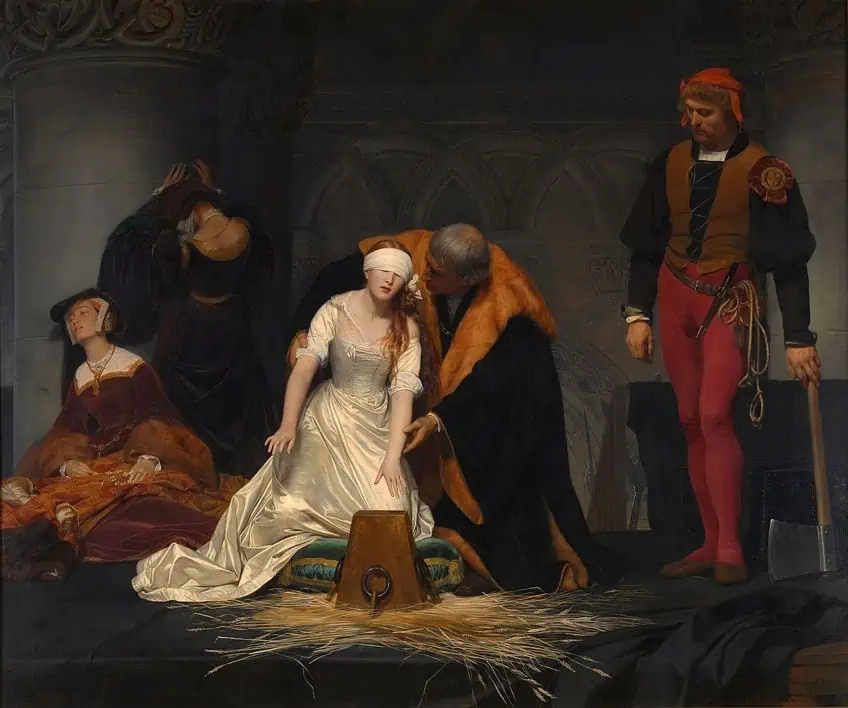 The Execution of Lady Jane Grey (1833) by Paul Delaroche; Paul Delaroche, Public domain, via Wikimedia Commons
The Execution of Lady Jane Grey (1833) by Paul Delaroche; Paul Delaroche, Public domain, via Wikimedia Commons
The Birth and Evolution of Academicism
The emergence of Academicism represents a crucial juncture in the evolution of art history. It transpired during a period when the art world was undergoing a significant transition, steering away from the flamboyance of the Baroque and Rococo eras towards a more restrained and refined style.
Let us look at how Academic art came to be and evolved throughout art history.
A Reaction Against Baroque Extravagance
The Baroque period, which spanned from the late 16th to the late 18th century, had reached its zenith in the 17th century, notably in the artistic hubs of Italy, Spain, and the Low Countries. This epoch was characterized by an unabashed embrace of grandeur, theatricality, and opulence. Baroque artists reveled in the extravagance of their craft, meticulously crafting elaborate ornamentation and intricacies within their works. Their art was a sensory spectacle, laden with emotional intensity, often capturing subjects in the midst of profound passions and turmoil. The Baroque aesthetic was a symphony of chiaroscuro, vibrant colors, and dynamic compositions, which aimed to engage the viewer’s emotions on an almost visceral level.
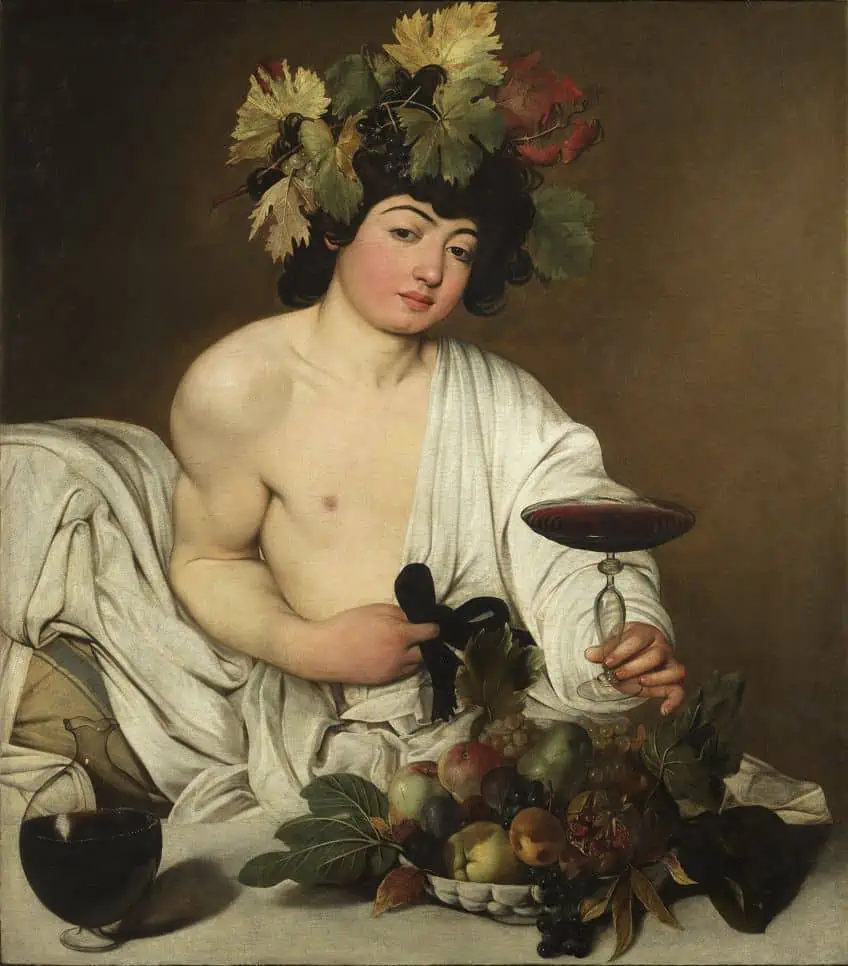
Baroque works were a testament to the human capacity to evoke deep emotional responses through art. The period’s pieces, whether they depicted dramatic religious scenes, lavish royal courts, or powerful allegories, left no room for indifference. However, this unbridled celebration of spectacle and emotion stood in stark contrast to the aspirations of the Academic art movement.
The Academic Response: A Quest for Composure
Academic artists of the 17th century viewed the Baroque style with a discerning eye. They saw the lavishness and sensationalism of the Baroque as a departure from the timeless ideals they sought to uphold. To them, the Baroque’s overwrought emotional intensity and the lavishness of its ornate details had swayed the art world toward excess and flamboyance. In essence, Academicism emerged as a reaction against the extravagant and emotionally charged aesthetics of the Baroque, offering a measured and composed alternative that would have a profound and lasting impact on the art world.
The movement’s commitment to clarity, balance, and the pursuit of classical ideals left an indelible mark on the course of art history, shaping the evolution of artistic expression for generations to come.
The Classical Ideal Revived
In their unwavering quest for a more balanced and classical approach to art, Academic artists found their wellspring of inspiration in the time-honored masterpieces of ancient Greece and Rome. These classical civilizations had long been revered for their graceful proportions, meticulous attention to detail, and an unshakable sense of order and harmony that permeated their artistic creations. For Academic artists, the aesthetics of classical antiquity served as a guiding light, and their admiration for this venerable heritage led to a fervent revival of classical themes and ideals.

A Return to Antiquity
Academic artists were not content merely to mimic the ancient world; they aimed to channel its spirit. The art of ancient Greece and Rome had long been celebrated for its portrayal of idealized human forms, sculpted with a profound appreciation for anatomical accuracy and a keen sense of poise. These artistic traditions, encapsulated in statues such as the Venus de Milo and the Discobolus, were the embodiment of harmony and grace.
Academic artists eagerly embraced these principles, aspiring to recreate the sense of timeless beauty that had graced the works of the ancients.
Renaissance Echoes
The Renaissance, which flourished in Europe from the 14th to the 17th century, also held a deep reverence for classical ideals. The artists of the Renaissance had similarly looked to antiquity for inspiration, resulting in masterpieces like Leonardo da Vinci’s Vitruvian Man (1490) and Michelangelo’s David (1501-1504). The Academic artists recognized and embraced the legacy of the Renaissance, forging a connection between their own work and the classical roots that had fueled the Renaissance era. The revival of classical themes and the return to traditional artistic values that characterized the Renaissance were key touchstones for the Academics.

Art As Clear Communication
Central to the Academic artistic philosophy was the belief that art should transcend mere self-expression. While they admired the Baroque’s capacity to stir the emotions, Academic artists believed in a loftier mission for art—namely, the role of a universal communicator. This paradigm shift was momentous, emphasizing that art should be accessible and comprehensible to a broader audience.
Instead of being confined to the subjective realm of personal emotions, Academic art aspired to tell stories and convey messages that would resonate with people across cultures and generations.
This shift in focus from personal emotional expression to clear and universal communication was pivotal in fostering a more widespread appreciation for art. It led to a democratization of artistic expression, making the visual language of art more accessible to diverse audiences. Academic artists believed that art should not remain the exclusive domain of the elite or the artistic avant-garde but should be a language through which humanity could collectively share stories, ideas, and emotions.
The Legacy of Academicism
The impact of Academicism extended well beyond its emergence in the 17th century. It continued to exert influence throughout the 18th and 19th centuries, ultimately leading to the formation of art academies in many European countries and beyond. These academies upheld the principles of Academic art, providing rigorous training and education for generations of artists.
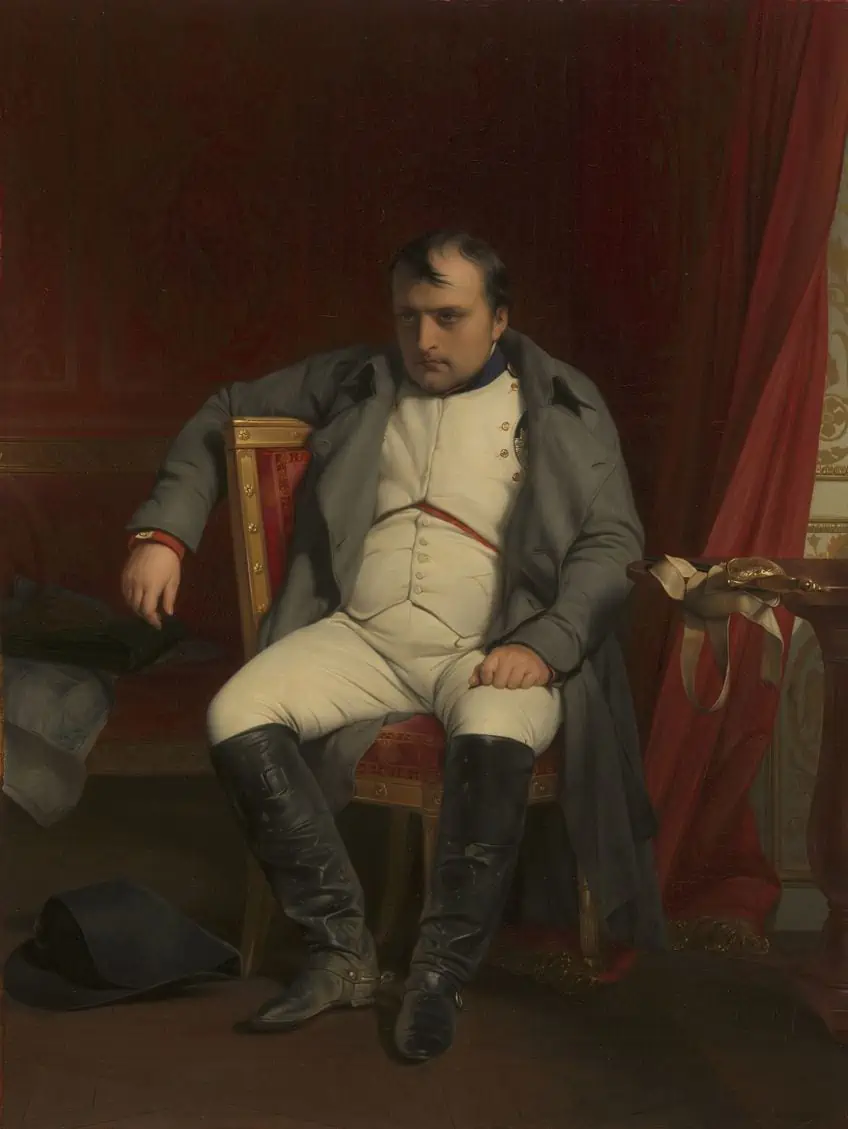
The Academic approach to art remained a dominant force until the early 20th century, when it began to yield to the rising tides of modernism. The avant-garde movements of the early 20th century, such as Cubism, Futurism, and Surrealism, challenged the conventions of Academic art and ushered in a new era of artistic experimentation and diversity. However, the principles of Academicism continued to influence and inform the work of many artists, and its legacy remains palpable in the realm of contemporary art.
Academic Art Principles: A Masterclass in Classical Techniques
Academic art, with its unwavering commitment to the mastery of technical skills and a disciplined adherence to established norms and aesthetics, stands as a testament to the enduring power of classical art principles. In this section of the exploration, we delve into the core principles that define Academic art and have shaped its rich legacy throughout art history.
From the pursuit of realism and representation to the meticulous emphasis on drawing and the quest for technical excellence, Academic art is a timeless masterclass in artistry that continues to captivate artists and art enthusiasts alike.
Realism and Representation
At the heart of Academic art lies a profound dedication to realism and representation. Academic artists, often turning their focus to historical, mythological, or biblical narratives, approach their subjects with a precision and faithfulness to reality that is nothing short of remarkable. Each stroke of the brush or pencil is a meticulous effort to capture the world as it appears, whether in portraiture, still life, or narrative scenes. The Academic commitment to faithfully rendering subjects ensures that the viewer is transported into a world that feels vivid, tangible, and relatable.

Classical Composition
Compositions in Academic art are a harmonious symphony of classical principles. Drawing inspiration from the art of antiquity, Academic artists adhere to classical rules of balance, proportion, and harmony. Each element within the composition is thoughtfully arranged to create a visual experience that mirrors the time-honored aesthetics of ancient Greece and Rome.
The result is not only a visual delight but also an homage to the timeless ideals that have transcended centuries and continue to enchant the modern eye.
Emphasis on Drawing
Drawing is the very foundation upon which Academic art is built. It is considered fundamental, and artists undergo rigorous training to develop their drawing skills. Meticulous attention is given to anatomy, perspective, and the use of line. Whether it’s the portrayal of the human form or the meticulous depiction of architectural details, Academic artists strive to master the art of drawing. Through this emphasis on drawing, Academic art celebrates the elegance of line and the precision it offers, setting the stage for the creation of captivating and technically brilliant works of art.

Narrative Clarity
Academic artists are not content with mere visual splendor; they seek to tell compelling stories through their work. Narrative clarity is a hallmark of Academic art, ensuring that viewers can readily interpret the subject matter and discern the artist’s intended message. Whether it’s a historical event, a mythological tale, or a biblical scene, Academic artists craft their compositions in a way that guides the eye through the narrative, allowing viewers to immerse themselves in the story being told.
The power of storytelling is harnessed to create art that not only engages the eye but also resonates with the mind and heart.
Technical Excellence
Achieving technical excellence is a central aspiration of Academic art. The pursuit of perfection is evident in every stroke, whether on canvas or paper. The creation of a smooth, polished finish is highly prized, and artists dedicate themselves to honing their craft to a level of unparalleled mastery. This technical excellence not only showcases the artist’s skill but also allows for the creation of works that are aesthetically flawless, inviting viewers to marvel at the sheer virtuosity of the artist’s hand.

Notable Academic Art Examples: A Glimpse into the Pinnacle of Classical Mastery
To truly grasp the essence of Academic art, one must embark on a journey into the hallowed halls of artistic mastery, where tradition, technique, and narrative precision converge in breathtaking harmony. This section invites you to step into the world of Academic art, a realm where artists achieved the zenith of their craft by adhering to classical principles with unwavering dedication. Through a careful examination of some of the most celebrated works and the artists behind them, we unravel the core of Academic art and its indelible impact on the annals of artistic history.
Prepare to be enthralled as we explore the timeless allure of these notable Academic art examples, each a masterpiece that serves as a testament to the enduring power of classical artistry.
Jean-Léon Gérôme (1824 – 1904)
| Date of Birth | 11 May 1824 |
| Date of Death | 10 January 1904 |
| Place of Birth | Vesoul, France |
| Nationality | French |
| Art Periods | Academicism and Orientalism |
| Famous Artworks |
|
Jean-Léon Gérôme, a prominent French painter, sculptor, and Academician, stands as a luminary figure in the realm of 19th-century Academic art. Born in Vesoul, France in 1824, he would go on to become a seminal force in the Academic art movement. Gérôme’s artistic career was marked by an unwavering commitment to classical principles, meticulous attention to detail, and a profound dedication to historical accuracy.
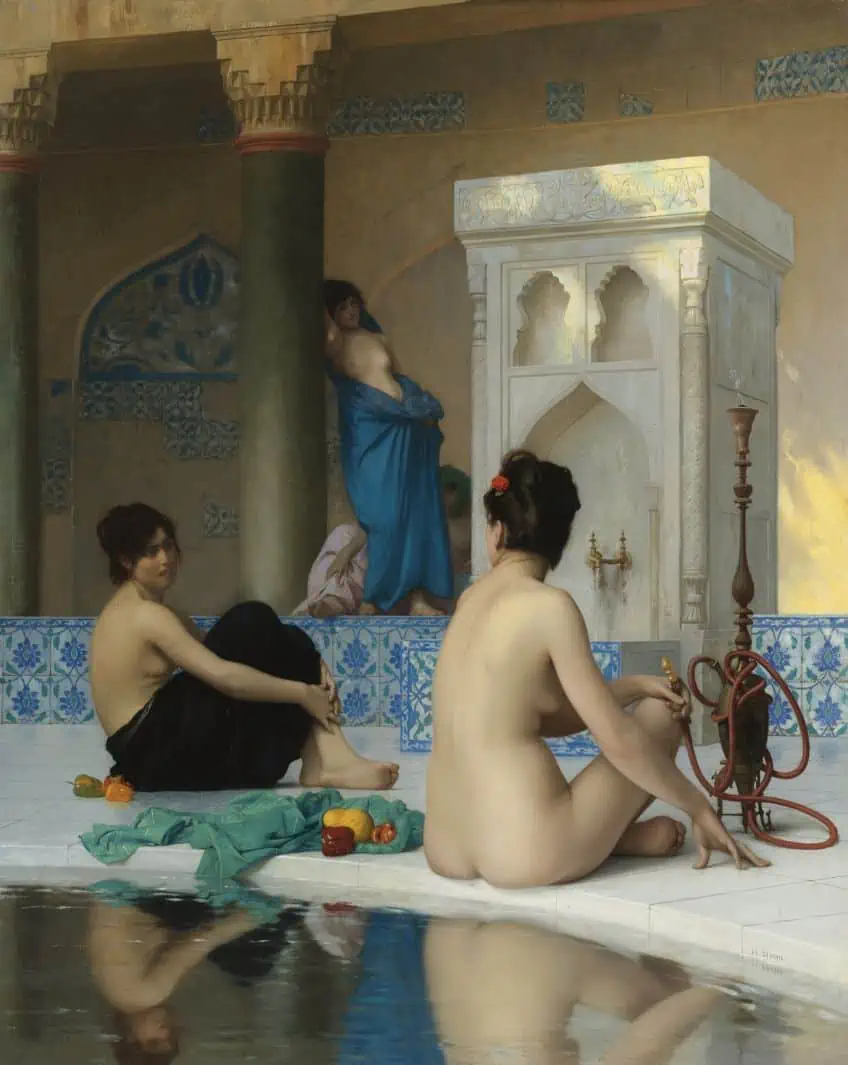
Gérôme’s oeuvre is characterized by a remarkable blend of technical virtuosity and historical narrative. He possessed a keen eye for precision and an unrelenting pursuit of realism, which is evident in his intricate compositions. His works often transported viewers to distant times and places, whether through the exotic allure of his Orientalist pieces or the evocative power of his historical scenes. As a student of the École des Beaux-Arts in Paris, Gérôme imbibed the classical teachings of his time, which instilled in him a deep respect for the works of antiquity and the Renaissance masters.
His art reflects this reverence, as he adeptly balanced the classical ideals of order, balance, and proportion with a profound sense of narrative clarity.
The Snake Charmer (1879)
| Date | 1879 |
| Medium | Oil on canvas |
| Dimensions (cm) | 82.2 × 121 |
| Current Location | Clark Art Institute, Williamstown, United States |
The Snake Charmer (1879) by Jean-Léon Gérôme is a captivating and meticulously detailed Academic painting that combines elements of Orientalism, Academic art, and narrative storytelling. The composition is rich in its depiction of a North African scene, which Gérôme was known for in his Orientalist works.
The composition is balanced and harmonious. The focal point is the central figure, the snake charmer, who is situated in the foreground. He is surrounded by a group of onlookers, creating a circular arrangement that draws the viewer’s attention to the main event. The background features an architectural setting, showcasing the distinct architectural elements of the North African region, adding a sense of place and authenticity.
Gérôme employs a rich and vivid color palette that adds depth and vibrancy to the scene. Warm earthy tones dominate the painting, with the skin tones of the figures blending seamlessly with the architectural surroundings. Hints of red, gold, and blue in the clothing and accessories of the characters add to the visual allure.

One of the most striking aspects of the painting is its meticulous attention to detail. Gérôme’s Academic training is evident in his ability to render texture and form with exquisite precision. The intricate patterns on the clothing, the ornate jewelry, and the subtle play of light and shadow on the skin and fabrics showcase his technical mastery.
The Snake Charmer is a narrative painting that tells a story. The snake charmer, poised in the center of the composition, plays his flute-like instrument, while the cobra rises, swaying to the music. The onlookers, a mix of curiosity, fear, and fascination, are engrossed by the performance. This narrative invites viewers to engage with the story and experience the tension and drama of the moment.
The Snake Charmer embodies the Orientalist fascination with the exotic and the other, a common theme in 19th-century European art. It reflects a Eurocentric view of the East as a place of mystery, sensuality, and danger. The snake charmer, with his enigmatic gaze, exotic attire, and mastery over a potentially deadly creature, embodies this perception.
The painting also highlights the role of the artist as a storyteller.
Gérôme’s attention to detail and his meticulous research into the cultural and historical accuracy of the scene demonstrate his commitment to creating a convincing narrative. The work invites viewers to step into a different world, one where they can observe and engage with the exotic and unknown.
However, it’s important to acknowledge the criticism that Orientalist art like this has faced. Some argue that it perpetuates stereotypes and exoticizes the East, reducing it to a source of entertainment for Western audiences. Such criticisms call for a deeper examination of the intentions behind such works and their impact on cultural perceptions.
William-Adolphe Bouguereau (1825 – 1905)
| Date of Birth | 30 November 1825 |
| Date of Death | 19 August 1905 |
| Place of Birth | La Rochelle, Charente-Maritime, France |
| Nationality | French |
| Art Periods | Academicism, Realism, and Neoclassicism |
| Famous Artworks |
|
William-Adolphe Bouguereau, a renowned French Academic painter, left a memorable mark on the world of 19th-century art. Born in La Rochelle, France, in 1825, he emerged as a pivotal figure in the Academic art movement, known for his extraordinary technical skill, classical sensibility, and a deep commitment to artistic tradition.
Bouguereau’s artistic journey was marked by a dedication to mastering the classical principles of art. His training at the prestigious École des Beaux-Arts in Paris exposed him to the enduring influences of classical antiquity and the Renaissance masters. This foundation profoundly shaped his artistic style and vision.

His oeuvre is characterized by a devotion to idealized beauty, meticulous attention to detail, and a profound mastery of classical techniques. His works often feature subjects from mythology, history, and religious narratives, brought to life with exquisite precision. His portrayal of the human form, in particular, is celebrated for its anatomical accuracy and the sensuous rendering of skin and flesh. As an artist closely associated with Academic art, Bouguereau upheld the movement’s principles of narrative clarity, classical composition, and technical excellence.
His paintings offer a captivating glimpse into the harmonious world of classical aesthetics, where ideal forms and emotive storytelling merge seamlessly.
The Birth of Venus (1879)
| Date | 1879 |
| Medium | Oil on canvas |
| Dimensions (cm) | 300 x 218 |
| Current Location | Musée d’Orsay, Paris, France |
William-Adolphe Bouguereau’s The Birth of Venus is a masterful example of Academic painting, characterized by its meticulous attention to detail, harmonious composition, and exquisite rendering of the human form. This iconic painting, created in 1879, captures a moment of divine beauty and mythology that was often explored by artists in the 19th century.
The composition of The Birth of Venus is a testament to Bouguereau’s adherence to classical principles. The central figure, Venus, is the focal point of the painting and is elegantly situated in the center. She emerges from a scallop shell, a classic symbol of her birth in Greek mythology. The composition is carefully balanced, with Venus’s flowing form and the cascading scene of angels in the background creating a sense of circular movement that guides the viewer’s eye. The use of a circular composition is a nod to classical ideals of balance and harmony, reminiscent of works from antiquity.
The color palette in the painting is a celebration of soft, ethereal hues. The skin tones are pale and luminous, emphasizing the otherworldly beauty of Venus. The sea and sky behind her are a gentle blend of blues, from cerulean to turquoise, creating a tranquil and dreamlike atmosphere. The delicate pinks and peach tones of her hair and the flowers in the foreground add a subtle touch of warmth to the overall cool palette.
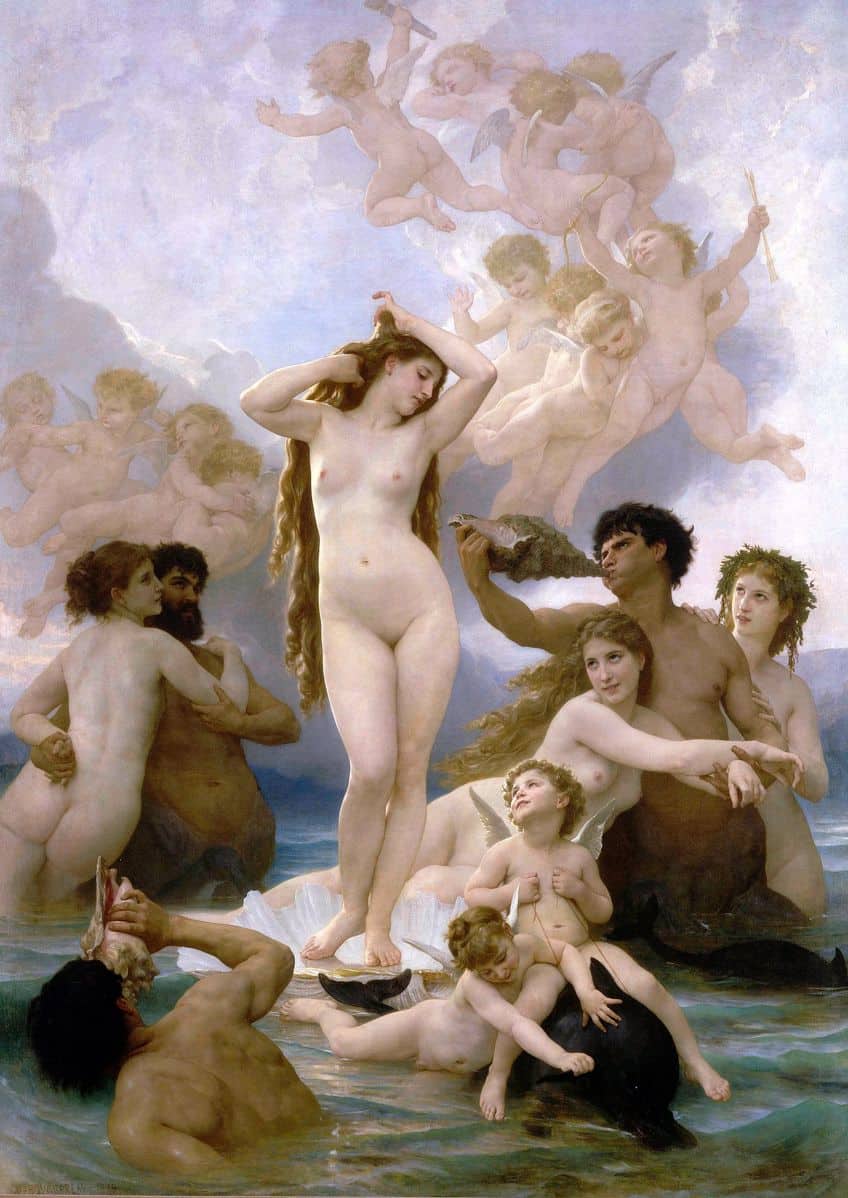
One of the most striking features of Bouguereau’s The Birth of Venus is the incredible level of detail in the painting. The rendering of Venus’s flowing hair, the play of light on her skin, and the intricate drapery are executed with exquisite precision. The attention to detail extends to the delicate rendering of the flowers and the reflections in the water, showcasing Bouguereau’s technical virtuosity.
The Birth of Venus is a narrative painting that tells the story of the goddess Venus’s birth, emerging fully grown from the seafoam. The painting captures the moment just after her birth, with Zephyrus, the west wind, and Chloris, the nymph, providing the backdrop. The narrative is rich in mythological symbolism, representing the classical ideals of beauty and sensuality embodied by Venus. The painting invites viewers to engage with the story and contemplate the concept of divine beauty.
In conclusion, Academic art, often regarded as the epitome of Academicism, has left an incredible impression on the world of art. This meticulous and precise approach to artistic creation, known as the Academic art style, has not only elevated technical excellence but also presented a canvas upon which the classical ideals of balance, harmony, and clarity have flourished. We’ve explored what Academic art represents and delved into the rich tapestry of Academic art examples that have captivated and influenced audiences for generations. As we reflect on this enduring artistic tradition, we find that Academic art serves as proof of the timeless allure of classical principles and continues to inspire contemporary artists and enthusiasts, reminding us that the pursuit of excellence and clarity remains a cornerstone of artistic expression.
Frequently Asked Questions
What Is Academic Art?
Academic art is a classical and meticulous style of artistic expression that emerged in the 17th century, characterized by a deep commitment to adhering to traditional artistic principles and techniques. It places a strong emphasis on the mastery of technical skills and a disciplined adherence to established norms and aesthetics. Academic art strives for precision, clarity, and harmony in its compositions, often depicting subjects with a high degree of realism. This approach serves as a deliberate departure from the emotional intensity and extravagance of the Baroque period, with a focus on storytelling, clear communication, and the portrayal of subjects that are universally comprehensible.
What Are the Characteristics of Academic Art?
Academic art is distinguished by several key characteristics. Academic art’s compositions adhere to classical rules of balance, proportion, and harmony, reflecting a deep appreciation for the art of antiquity. Drawing is fundamental in academic art, with meticulous attention given to anatomy, perspective, and the use of line. The art style also prioritizes narrative clarity, ensuring viewers can readily interpret the subject matter and the artist’s intended message. Furthermore, achieving technical excellence in painting and drawing is highly prized in academic art, with a focus on achieving a smooth and polished finish.
Nicolene Burger, a South African multimedia artist and creative consultant, specializes in oil painting and performance art. She earned her BA in Visual Arts from Stellenbosch University in 2017. Nicolene’s artistic journey includes exhibitions in South Korea, participation in the 2019 ICA Live Art Workshop, and solo exhibitions. She is currently pursuing a practice-based master’s degree in theater and performance. Nicolene focuses on fostering sustainable creative practices and offers coaching sessions for fellow artists, emphasizing the profound communicative power of art for healing and connection. Nicolene writes blog posts on art history for artfilemagazine with a focus on famous artists and contemporary art.
Learn more about Nicolene Burger and about us.
Cite this Article
Nicolene, Burger, “Academic Art – When Creativity Becomes Intellectual.” artfilemagazine – Your Online Art Source. November 9, 2023. URL: https://artfilemagazine.com/academic-art/
Burger, N. (2023, 9 November). Academic Art – When Creativity Becomes Intellectual. artfilemagazine – Your Online Art Source. https://artfilemagazine.com/academic-art/
Burger, Nicolene. “Academic Art – When Creativity Becomes Intellectual.” artfilemagazine – Your Online Art Source, November 9, 2023. https://artfilemagazine.com/academic-art/.



